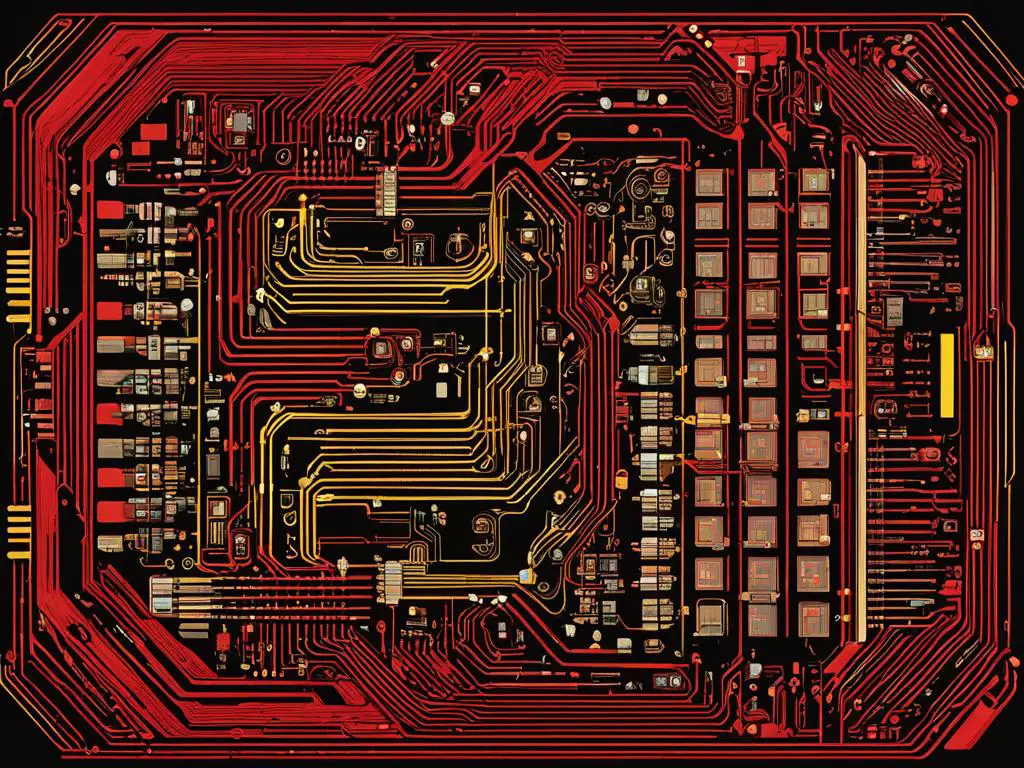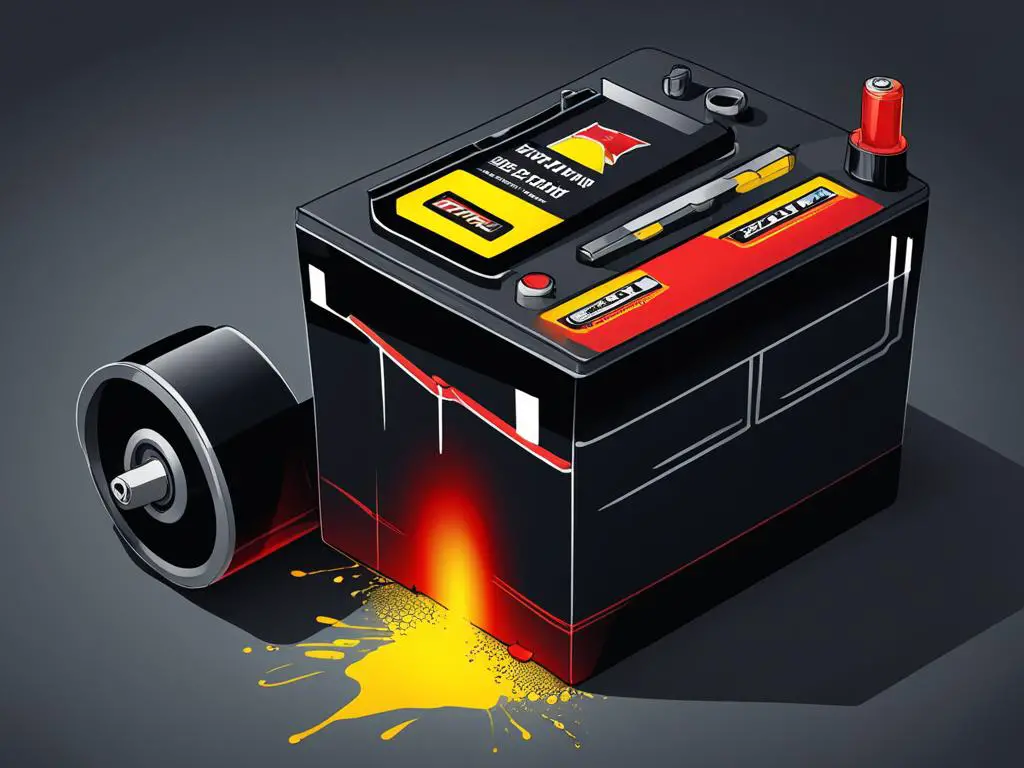Can-Am vehicles are known for their performance and durability. However, like any machine, they may encounter occasional faults that require attention and repair. One common issue faced by Can-Am owners is the PPS (Pedal Position Sensor) fault, which can cause concern for the vehicle’s performance and reliability.
The Can-Am PPS fault code is often indicated on the dash display and can affect the vehicle’s starting or driving capabilities. When this fault code appears, it’s essential to understand the causes and solutions to resolve the issue efficiently and ensure the proper functioning of your Can-Am vehicle.
Key Takeaways:
- The Can-Am PPS fault code signifies issues with the Pedal Position Sensor.
- Symptoms of the PPS fault may include difficulties starting the engine, limited speed, decreased fuel efficiency, and inconsistent responses.
- Common causes of the PPS fault include battery issues, damaged wiring, malfunctioning pedal position sensors, and damaged throttle body.
- Battery-related PPS faults can be addressed by inspecting and cleaning the battery terminals and cables, and recharging or replacing the battery if necessary.
- For damaged wiring, it is important to inspect the wire harness and replace any frayed or broken wires.
Understanding the Can-Am PPS Fault
The Can-Am PPS fault code indicates issues with the Pedal Position Sensor. This fault is commonly observed in Can-Am Defender vehicles and can result in difficulties starting the engine or erratic behavior while driving. Recognizing the symptoms associated with the PPS fault is crucial in troubleshooting and resolving the issue effectively.
Symptoms of Can-Am PPS Fault
The Can-Am PPS fault can manifest in various ways, causing inconvenience and hindering the vehicle’s performance. Some common symptoms include:
- The engine failing to start
- Limited speed or reduced acceleration
- Decreased fuel efficiency
- Engine misfires or rough idle
- Inconsistent responses to pedal inputs
If the PPS fault occurs while driving, the vehicle may enter “limp mode,” a safety feature that restricts its performance capabilities to prevent further damage. Limp mode can be frustrating for the driver, as the vehicle’s speed and overall power will be significantly limited.
Understanding these symptoms can assist in identifying the potential PPS fault and taking appropriate measures to resolve the issue efficiently.

Note: The image above illustrates a Can-Am PPS fault code, highlighting the importance of addressing the issue promptly.
Common Causes of Can-Am PPS Fault
When your Can-Am vehicle experiences a PPS (Pedal Position Sensor) fault, it is essential to understand the common causes behind this issue. Identifying the root cause can help you troubleshoot and rectify the problem effectively, ensuring your vehicle performs optimally. The most common causes of the Can-Am PPS fault include:
- Battery Issues: Battery-related problems such as low voltage, loose cables, or dead batteries can trigger the PPS fault. It is crucial to inspect your battery and ensure it is operating at a sufficient voltage level.
- Malfunctioning Pedal Position Sensors: Over time, pedal position sensors can deteriorate due to wear and tear or physical damage. When these sensors malfunction, they can contribute to the occurrence of the PPS fault.
- Damage to Wiring: Faulty or damaged wiring, particularly in the pedal position sensors and throttle body, can disrupt the proper functioning of the PPS system. Ensuring the integrity of your vehicle’s wiring is crucial for preventing PPS faults.
- Throttle Body Damage: A damaged throttle body can restrict airflow and cause the PPS fault code to appear. Inspecting and maintaining the throttle body is essential to prevent this issue.
By identifying and addressing these common causes, you can effectively resolve the Can-Am PPS fault and restore your vehicle’s performance. In the next sections, we will delve further into specific fixes and solutions for each cause.

Common Causes of Can-Am PPS Fault
| Cause | Description |
|---|---|
| Battery Issues | Low voltage, loose cables, or dead batteries |
| Malfunctioning Pedal Position Sensors | Wear and tear or physical damage to the sensors |
| Damage to Wiring | Faulty or damaged wiring in the sensors and throttle body |
| Throttle Body Damage | Disruption of airflow due to a damaged throttle body |
Fixing Can-Am PPS Fault: Battery Issues
When encountering a PPS fault in your Can-Am vehicle, it’s crucial to address battery-related issues as they can often be the root cause. By examining the battery cables and terminals, you can identify problems such as loose connections, corrosion, or debris.
Here are some steps to fix battery-related PPS faults:
- Tighten the cables: Check for any loose connections between the battery and the PPS system. Ensure that the cables are securely fastened to eliminate any disruptions in the electrical flow.
- Clean the terminals: Inspect the battery terminals for corrosion or build-up. Corroded terminals can impede the flow of electricity and cause PPS faults. To clean them, create a mixture of baking soda and warm water. Gently scrub the terminals with a brush or sponge dipped in the mixture, removing any corrosion or residue.
- Apply petroleum jelly or dielectric grease: After cleaning the terminals, apply petroleum jelly or dielectric grease to prevent future corrosion. This protective coating acts as a barrier, preventing moisture and corrosion from affecting the battery connection.
- Recharge or replace the battery: If the battery voltage is low, recharge it overnight using a battery charger. However, if the battery fails to hold a charge or shows signs of deterioration, it may need to be replaced. Consult the vehicle’s manual or seek professional assistance for the appropriate battery replacement.

Proper maintenance of your Can-Am vehicle’s battery is essential to avoid PPS faults related to low voltage, loose cables, or corroded terminals. By following these steps, you can resolve battery issues and ensure the smooth operation of your vehicle.
| Battery Issue | Solution |
|---|---|
| Loose connections | Tighten the cables to establish a secure connection. |
| Corroded terminals | Clean the terminals with a mixture of baking soda and warm water, then apply petroleum jelly or dielectric grease. |
| Low voltage | Recharge the battery using a battery charger, or replace if necessary. |
Fixing Can-Am PPS Fault: Damaged Wiring
One of the common causes of the Can-Am PPS fault is damaged wiring. When the wiring connecting the pedal position sensors and throttle body is compromised, it can lead to PPS faults. To ensure a proper fix, it is essential to thoroughly inspect the wire harness for any signs of damage, debris, or loose connections.
If you notice any frayed or broken wires, they should be promptly replaced to restore the electrical connection. It is also important to clean the wire harness, removing any dirt or debris that may interfere with the signal transmission.
If you are not confident in your abilities to repair the damaged wiring, seeking assistance from a professional repair shop is highly recommended. They will have the expertise to provide compatible replacements or make the necessary repairs, ensuring the proper functioning of the Can-Am vehicle.
For a better understanding of the different components involved, refer to the table below:
| Component | Description |
|---|---|
| Wire Harness | A bundle of wires that connects various electrical components in the vehicle. |
| Pedal Position Sensors | Sensors that detect the position of the accelerator pedal, providing input to the vehicle’s engine control module. |
| Throttle Body | The part of the engine that regulates the amount of air entering the combustion chamber, controlled by the pedal position sensors. |
Takeaway
Addressing damaged wiring is crucial in fixing Can-Am PPS faults. By inspecting and replacing any damaged wires, cleaning the wire harness, and seeking professional assistance if needed, you can resolve wiring-related issues and ensure the smooth operation of your Can-Am vehicle.
Fixing Can-Am PPS Fault: Malfunctioning Pedal Position Sensors
Malfunctioning pedal position sensors can be a common cause of the Can-Am PPS fault. These sensors may experience issues due to physical damage, excessive wear and tear, or accumulation of dirt and debris.
When troubleshooting the PPS fault, it is important to inspect the sensors for any signs of damage or dirt. Carefully clean the sensors if necessary, ensuring that no debris is obstructing their proper functioning.
If the pedal position sensors appear worn or damaged, it may be necessary to replace them. Testing the sensors with a multimeter can help determine their functionality and confirm whether replacement is required.
Additionally, it is crucial to consider environmental factors that can affect the sensors’ performance. Extreme temperatures, such as overheating, can impact the accuracy and reliability of the pedal position sensors.
To summarize, addressing malfunctioning pedal position sensors involves:
- Inspecting sensors for physical damage and dirt accumulation
- Cleaning the sensors if necessary
- Replacing worn or damaged sensors
- Testing sensors with a multimeter
It is also vital to consider temperature conditions and take appropriate measures to prevent sensor overheating.
By taking these steps, Can-Am owners can effectively fix the PPS fault related to malfunctioning pedal position sensors and ensure the smooth operation of their vehicles.
Fixing Can-Am PPS Fault: Other Causes and Solutions
In addition to the common causes discussed earlier, there are a few other factors that can contribute to Can-Am PPS faults. Understanding these causes and implementing the appropriate solutions is crucial for resolving the issue effectively.
“Software glitches are one of the possible causes of Can-Am PPS faults.”
Software glitches can sometimes trigger the PPS fault code. In such cases, updating or resetting the vehicle’s Electronic Control Unit (ECU) can often address the issue. Engaging with the Can-Am dealership or authorized service center can ensure that the software updates are performed correctly and optimize the functionality of your vehicle.
Another potential cause of PPS faults is a defective stator. The stator is an essential component responsible for generating power in the vehicle’s electrical system. If it becomes worn or damaged, it can impact the proper functioning of the PPS. In such cases, a replacement stator may be necessary to rectify the issue and restore optimal performance.
Furthermore, a damaged foot pedal can also contribute to PPS faults. The foot pedal plays a crucial role in transmitting input signals to the PPS sensor. If the foot pedal is worn, damaged, or has loose connections, it can disrupt the proper functioning of the PPS. In such situations, it may be necessary to replace both the foot pedal and the affected sensor to ensure smooth operation of the vehicle.
Summary:
- Software glitches can trigger PPS faults, and resetting or updating the vehicle’s ECU can be a potential solution.
- A defective stator can cause PPS faults, and it may require a replacement to fix the issue.
- A damaged foot pedal can disrupt the PPS functionality, and both the foot pedal and sensor may need to be replaced.
Conclusion
The Can-Am PPS fault is a common issue that can significantly impact the performance of Can-Am vehicles. However, with the right diagnosis and solutions, Can-Am owners can effectively repair and troubleshoot these faults. By addressing battery issues, damaged wiring, malfunctioning sensors, and other potential causes, owners can ensure their vehicles function smoothly and reliably.
Regular maintenance is key to preventing the occurrence of PPS faults. By maintaining the battery’s health, checking and repairing any damaged wiring, and replacing malfunctioning sensors, owners can reduce the risk of encountering this problem. Timely actions and proactive troubleshooting can save time and money in the long run.
Always remember that working with electrical components requires caution and expertise. If you’re unsure about the diagnosis or repair process, it’s advisable to seek assistance from a certified Can-Am technician or authorized service center. They have the knowledge and experience to efficiently diagnose and resolve PPS faults, ensuring your vehicle returns to optimal performance quickly and safely.
FAQ
What is a Can-Am PPS fault?
A Can-Am PPS fault refers to an issue with the Pedal Position Sensor in Can-Am vehicles. It can cause problems with the vehicle’s starting and driving capabilities.
What are the symptoms of a Can-Am PPS fault?
Symptoms of a Can-Am PPS fault may include the engine not starting, limited speed, decreased fuel efficiency, engine misfires, and inconsistent responses. The vehicle may also enter “limp mode,” which restricts its performance capabilities.
What are the common causes of a Can-Am PPS fault?
Common causes of a Can-Am PPS fault include battery issues (such as low voltage, loose cables, or dead batteries), damaged wiring (especially around the sensors and throttle body), malfunctioning pedal position sensors, and a damaged throttle body.
How can I fix a Can-Am PPS fault caused by battery issues?
Start by inspecting the battery cables and terminals for loose connections, corrosion, or debris. Tighten the cables and clean the terminals using a mixture of baking soda and warm water. If the battery voltage is low, recharge it overnight with a battery charger. If the battery fails to hold a charge, it may need to be replaced.
How can I fix a Can-Am PPS fault caused by damaged wiring?
Inspect the wire harness connected to the pedal position sensors and throttle body for any damage, debris, or loose connections. Clean the harness if necessary, and replace any frayed or broken wires. Seek assistance from a repair shop for compatible replacements or repairs if needed.
How can I fix a Can-Am PPS fault caused by malfunctioning pedal position sensors?
Inspect the sensors for any physical damage or dirt accumulation and clean them if necessary. If the sensors appear worn or damaged, they may need to be replaced. Testing the sensors with a multimeter can help determine their functionality. Take extreme temperatures into consideration as they can cause sensor overheating.
Are there any other causes and solutions for a Can-Am PPS fault?
Yes, other causes can include software glitches, a defective stator, or a damaged foot pedal. Software updates or resetting the vehicle’s ECU can address software-related issues. A worn or damaged stator may need to be replaced, and a worn or damaged foot pedal can affect the foot pedal sensor, requiring the replacement of both components.
How can I troubleshoot and repair my Can-Am PPS fault?
By addressing battery issues, damaged wiring, malfunctioning sensors, or other potential causes, you can troubleshoot and repair your Can-Am PPS fault. Regular maintenance and timely actions can prevent the occurrence of PPS faults and ensure the smooth functioning of your Can-Am vehicle.


Leave a Reply